Tsinghua University Clinches 1 Top Award, Multiple Prizes at 2023 National Science and Technology Ceremony
The National Science and Technology Conference, the National Science and Technology Awards Conference, and the Conference of Academicians of the Two Academies were held in Beijing on the morning of June 24. For the 2023 National Science and Technology Awards, a total of 2 people were selected for the National Highest Science and Technology Award, 49 National Natural Science Awards, 62 National Technological Invention Awards, 139 National Science and Technology Progress Awards, and 10 people for the International Science and Technology Cooperation Award of the People’s Republic of China.
Academician Xue Qikun of the Department of Physics at Tsinghua University won the National Highest Science and Technology Award. Tsinghua University, as the first completing unit or the completing unit where the first completing person is located, won 9 of the three national science and technology awards in 2023, including 2 first prizes and 7 second prizes, ranking first among universities in the country in the number of awards.
Winner of the National Highest Science and Technology Award: Xue Qikun
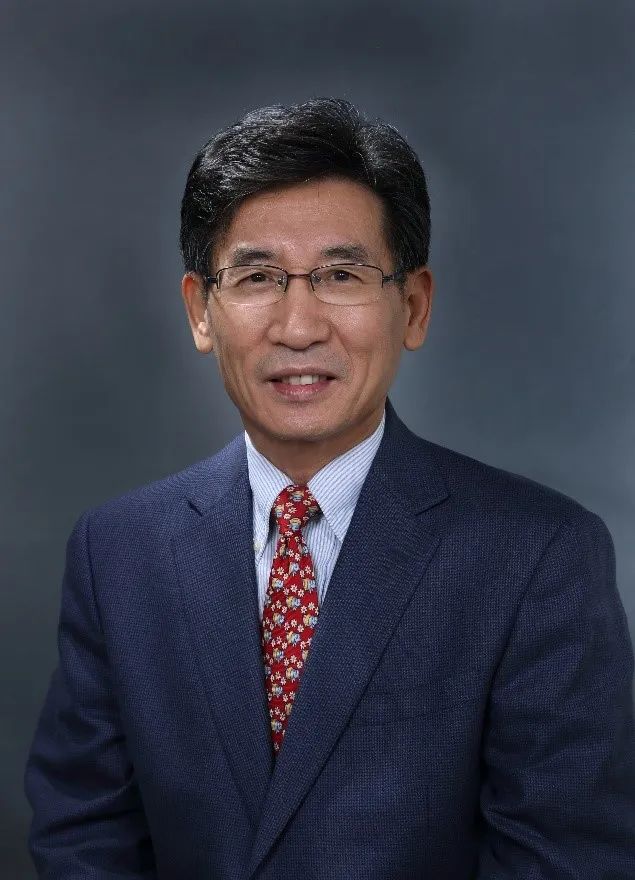
Xue Qikun, a member of the Communist Party, is a professor at the Department of Physics of Tsinghua University, president of the Southern University of Science and Technology, and an academician of the Chinese Academy of Sciences. Xue Qikun is an experimental physicist with an international reputation in the field of condensed matter physics. He is one of the outstanding scientists who have made major internationally leading scientific breakthroughs in the field of basic research in China since the reform and opening up. He creatively developed an ultra-high vacuum interconnected system of molecular beam epitaxy, scanning tunneling microscopy, and angle-resolved photoelectron spectroscopy, which has become an internationally used powerful experimental technology for the controllable preparation and characterization of quantum materials at the atomic scale. On this basis, he led the team to make two original scientific discoveries of the quantum anomalous Hall effect and interface high-temperature superconductivity. The experimental discovery of the quantum anomalous Hall effect in topological insulators is a milestone breakthrough in the field of condensed matter physics, and the discovery of high-temperature superconductivity at the heterojunction interface has opened up a new research direction for high-temperature superconductivity, both of which have had a huge academic impact internationally. As the first finisher, he won the first prize of the National Natural Science Award in 2018. As the first Chinese scientist, he won the highest award in international condensed matter physics – the Oliver Buckley Prize (2024) and the highest award in international low temperature physics – the Fritz London Prize (2022).
Tsinghua University-led projects that won the three national science and technology awards
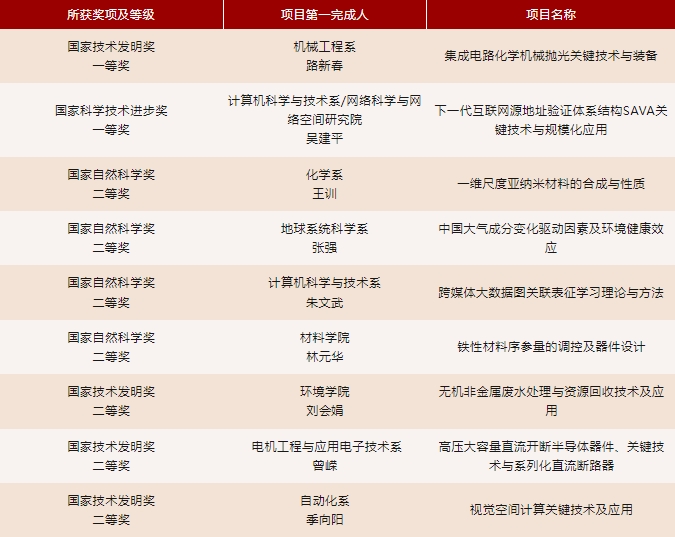
First Prize of National Technological Invention Award
Key technologies and equipment for chemical mechanical polishing of integrated circuits
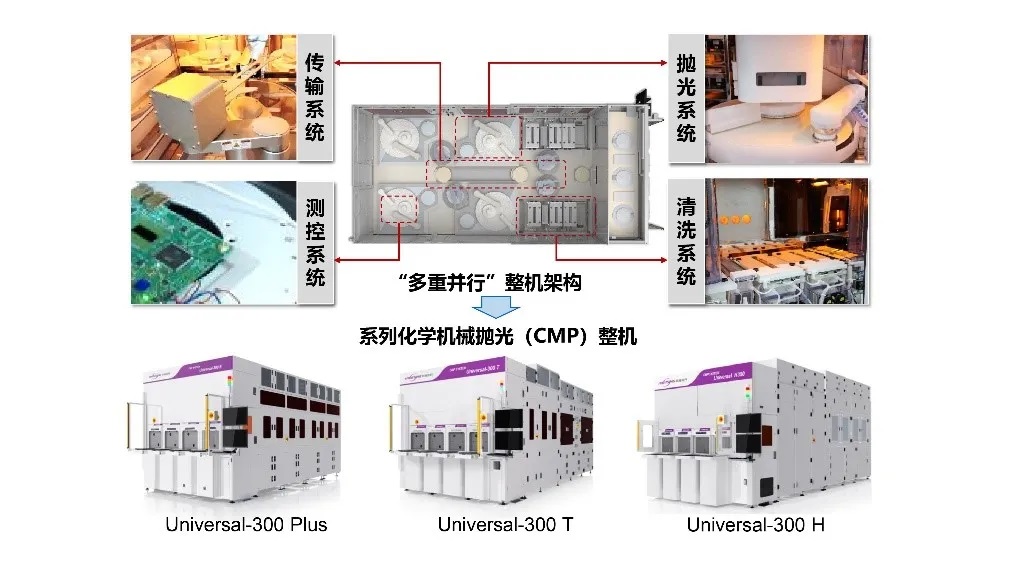
Multiple parallel machine architecture and CMP series machine
Main contributors: Lu Xinchun (Tsinghua University), Luo Jianbin (Tsinghua University), Wang Tongqing (Tsinghua University), Zhao Dewen (Tsinghua University), He Yongyong (Tsinghua University), Liu Yuhong (Tsinghua University)
Chemical mechanical polishing (CMP) is the premise and guarantee for integrated circuit manufacturing processes such as lithography, and its equipment has long been monopolized by foreign countries. The project revealed the flow field motion law of the polishing process and the global pressure control mechanism of the wafer, pioneered a new linear motion polishing unit, invented double-sided spray cleaning and surface tension gradient assisted vertical rotation drying technology, established sub-nanometer film thickness measurement and friction end point detection technology, and invented a modular flexible layout of the whole machine architecture. It has broken through foreign patent barriers and provided a full range of CMP equipment for chip manufacturing, with significant economic and social benefits, and played an important supporting role in the independent and controllable high-end chip manufacturing in my country.
First Prize of National Science and Technology Progress Award
Key technologies and large-scale applications of the next generation Internet source address verification architecture SAVA
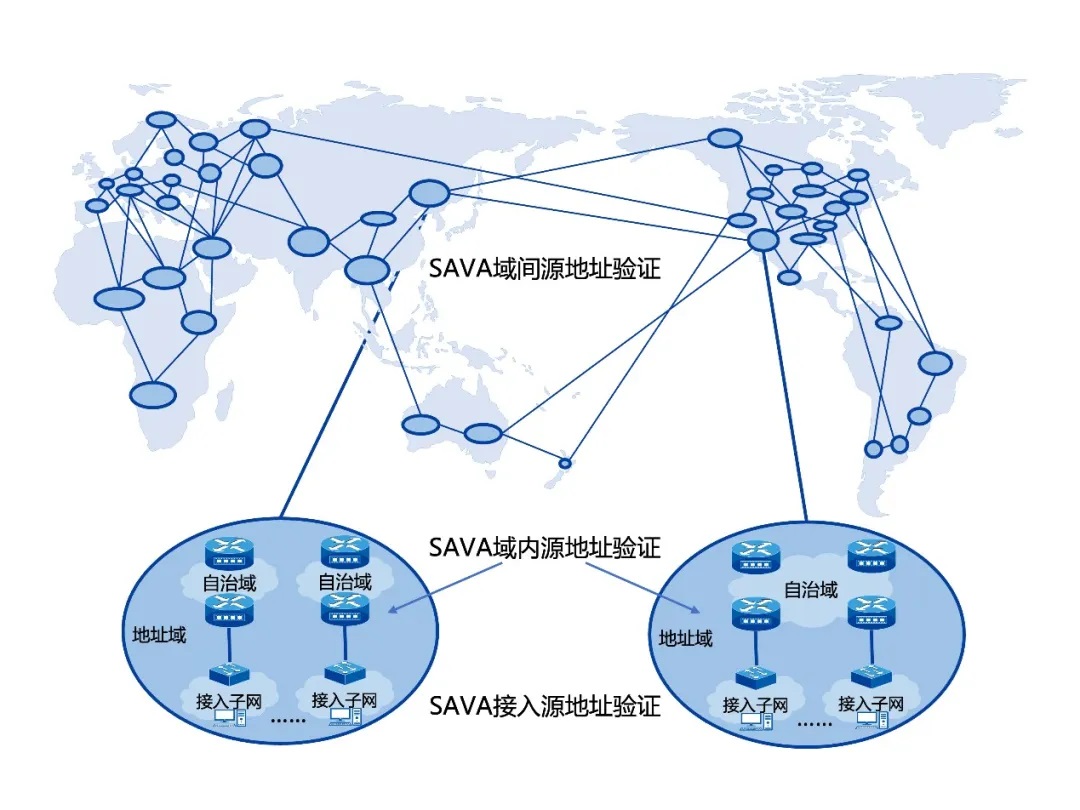
Architecture
Main contributors: Wu Jianping, Li Xing, Li Chongrong, Liu Ying, Xu Ke, Ren Gang, Yin Xia, Li Hewu, Xu Mingwei, Cui Yong, Li Dan, Wang Jilong, Jie Chongfeng, Gu Yunan, Lin Tao
Main completion units: Tsinghua University, China Telecom Group Co., Ltd., Huawei Technologies Co., Ltd., H3C Technologies Co., Ltd., CERNET Co., Ltd.
The Internet has long lacked effective source address verification, which has led to the rampant use of fake source addresses, becoming the most serious security risk in cyberspace. The project proposed the next-generation Internet source address verification architecture SAVA, which is an international first; it broke through the key technologies of source address verification at the access, intra-domain, and inter-domain levels, reaching the international leading level. It promoted the establishment of special working groups SAVI and SAVNET by the International Internet Standardization Organization IETF, completed 8 IETF international standards, generated significant economic benefits, and was widely applied to the national backbone network and industry-specific networks. It has achieved remarkable results in promoting the scientific and technological progress of my country’s core Internet technologies, ensuring the security of cyberspace, and serving the strategy of building a strong network and a strong science and technology country.
Second Prize of National Natural Science Award
Synthesis and properties of one-dimensional sub-nanomaterials
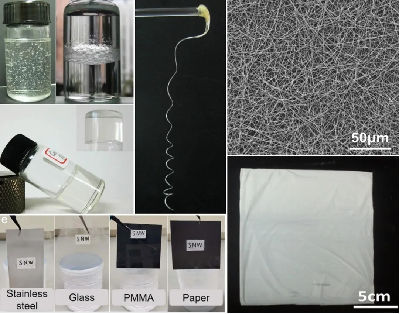
Inorganic sub-nanowire gels, binders, spinning fibers and macroscopic assemblies
Main contributors: Wang Xun (Tsinghua University), Hu Shi (Tsinghua University), Liu Junli (Tsinghua University), Xu Xiangxing (Tsinghua University), Li Haoyi (Tsinghua University)
Sub-nanometer is the limit of the size of atoms/molecules forming specific aggregated materials, and is the key to exploring and understanding the qualitative change of material properties. The project has carried out research work around the discovery of sub-nanometer limit size materials, the proposal of new concepts, and new size effects at the sub-nanometer scale. It has achieved a breakthrough in the synthesis method of sub-nanometer scale materials, discovered the macroscopic polymer properties of one-dimensional inorganic sub-nanowires, and achieved the stabilization of sub-nanometer metastable structures by surface coordination coupling surface atomic rearrangement. Five representative papers were published in Nat.Chem. / Nat.Commun. / J.Am.Chem.Soc. (3 papers), with a total of more than 1,000 SCI citations, leading and promoting the development of related directions.
Second Prize of National Natural Science Award
Driving factors of atmospheric composition changes in China and their environmental health effects
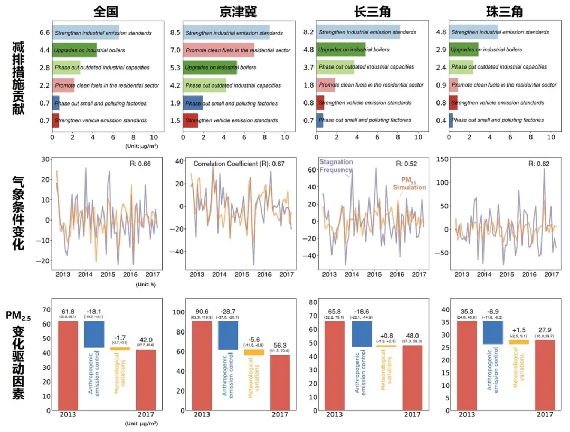
Driving factors of PM2.5 changes in China
Main contributors: Zhang Qiang (Tsinghua University), He Kebin (Tsinghua University), Liu Jun (Peking University), Zheng Bo (Tsinghua University), Zhu Tong (Peking University)
my country is one of the regions in the world with the most dramatic changes in atmospheric composition and the most complex atmospheric pollution. In the process of serving the major strategic needs of national atmospheric pollution control, the project has condensed key scientific issues and, through theoretical and methodological innovations, has achieved original results with important international influence in the long-term change characteristics of China’s main atmospheric component emissions, the spatiotemporal evolution of atmospheric PM2.5 component concentrations and source identification, the driving factors of atmospheric component changes and environmental health effects, etc., which has strongly promoted the development of atmospheric chemistry and made important contributions to my country’s leading international frontier research on atmospheric component emissions.
Second Prize of National Natural Science Award
Control of order parameters of ferroic materials and device design
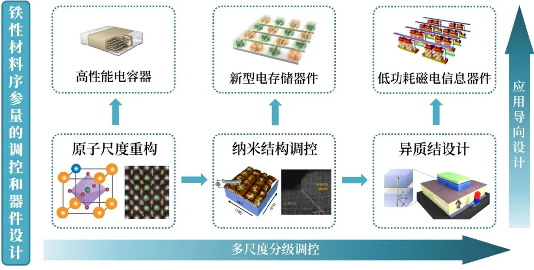
Project research ideas
Main contributors: Lin Yuanhua (Tsinghua University), Nan Cewen (Tsinghua University), Pan Hao (Tsinghua University), Ma Ji (Tsinghua University), Hu Jiamian (Tsinghua University)
The demand for high-performance information functional materials and devices in technologies such as aerospace, new energy vehicles, and 5G communications is increasing day by day. Ferroelectric materials have order parameters and multifunctionality, and are the key foundation for the development of high-density, low-power, and highly stable information functional devices. This project has carried out multi-scale hierarchical regulation of ferroelectric materials and achieved a series of original results: it has developed a nanodomain engineering strategy for ferroelectric materials, breaking through the restrictive relationship between polarization and loss, and obtaining capacitor devices with energy storage density far exceeding the international record of the same period; it has developed a nanostructure regulation strategy for ferroelectric materials, expanding the application paradigm of ferroelectric functional devices; it has constructed a theoretical method for analyzing ferroelectric-ferromagnetic correlation coupling, and designed a new low-power magnetoelectric prototype device. The five representative works of the project have been widely cited by domestic and foreign peers, which has strongly promoted research and development in this field.
Second Prize of National Natural Science Award
Theory and methods of learning cross-media big data graph correlation representation
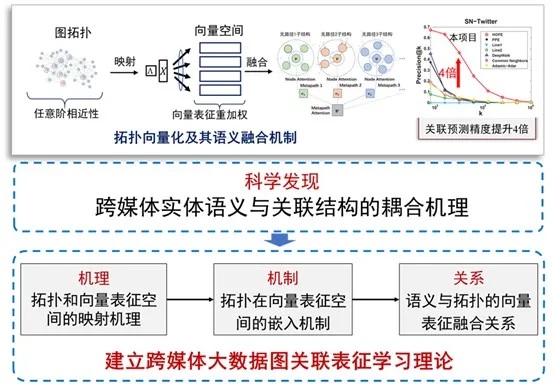
Overall project plan
Main contributors: Zhu Wenwu (Tsinghua University), Cui Peng (Tsinghua University), Wang Xiao (Tsinghua University), Wang Xin (Tsinghua University), Zhang Ziwei (Tsinghua University)
Cross-media big data representation is the core of discovering and utilizing deep, multi-scale association rules from large-scale heterogeneous media data. The project breaks through the limitations of traditional entity representation on the expression of association structure, reveals the vectorized representation mechanism of graph topology, and establishes a theoretical system of graph association representation learning that couples entity semantics with association structure, making creative contributions to the development of cross-media big data representation theory. Five representative papers have been cited more than 2,000 times in SCI, and have received positive comments from internationally renowned scholars such as Turing Award winners, 40 academicians, and more than 170 ACM/IEEE Fellows. The project results have been widely used in important scenarios such as digital content services.
Second Prize of National Technological Invention Award
Inorganic non-metallic wastewater treatment and resource recovery technology and application
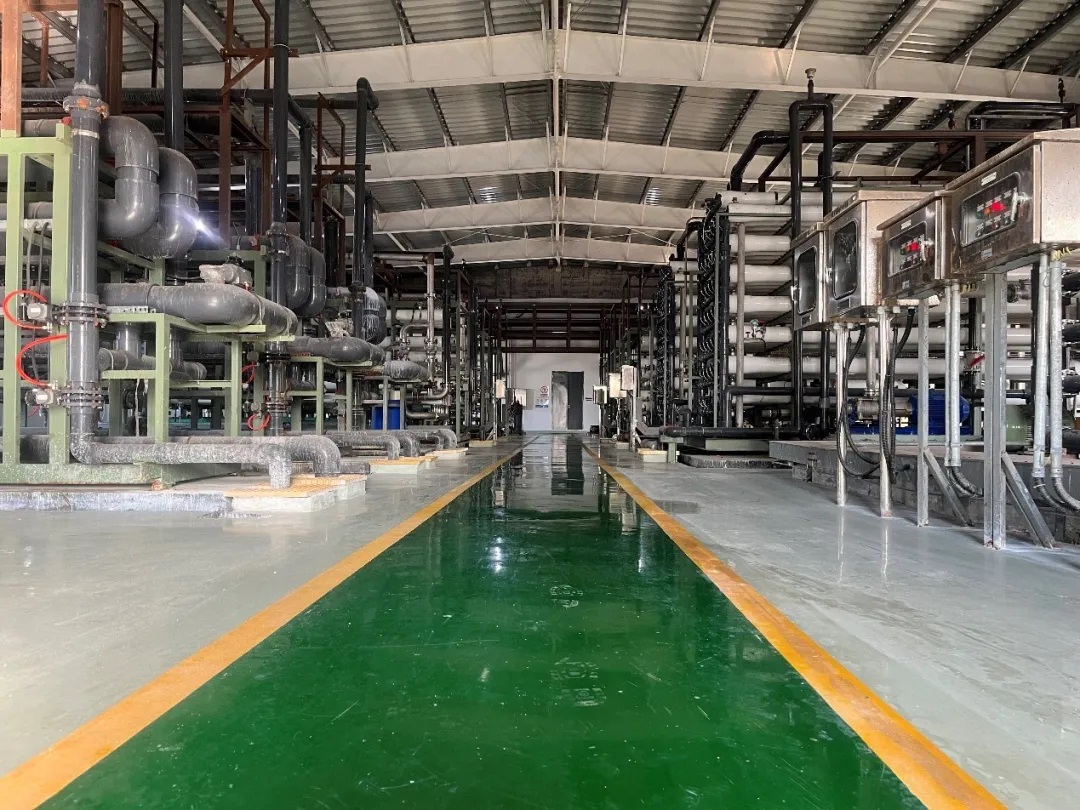
Wastewater reuse and zero discharge project site
Main contributors: Liu Huijuan (Tsinghua University), Liu Ruiping (Research Center for Eco-Environmental Sciences, Chinese Academy of Sciences), Li Enchao (Baowu Water Technology Co., Ltd.), An Xiaoqiang (Tsinghua University), Xu Fu (Suzhou Suwote Environmental Technology Co., Ltd.), Fu Yongfei (Longi Green Energy Technology Co., Ltd.)
In response to the problems of high inorganic non-metallic concentrations in wastewater from traditional and emerging industries, difficulty in treatment under high-salt conditions, and low resource recovery rate, this project uses salt-tolerant biological denitrification, enhanced adsorption defluorination, and chemical-biological synergistic removal of multiple pollutants as the technical route. It has invented a series of new bacterial agents, new agents, and new equipment, and invented key technologies for efficient removal, coordinated regulation, and deep purification of co-existing inorganic matter in water. It has created application processes and integrated systems for different engineering scenarios and needs, and achieved high-standard wastewater discharge, high-quality water reuse, and high-grade salt recovery, providing important environmental science and technology support for the development of my country’s strategic emerging industries and the transformation and upgrading of traditional industries.
Second Prize of National Technological Invention Award
High-voltage and large-capacity DC breaking semiconductor devices, key technologies and serialized DC circuit breakers
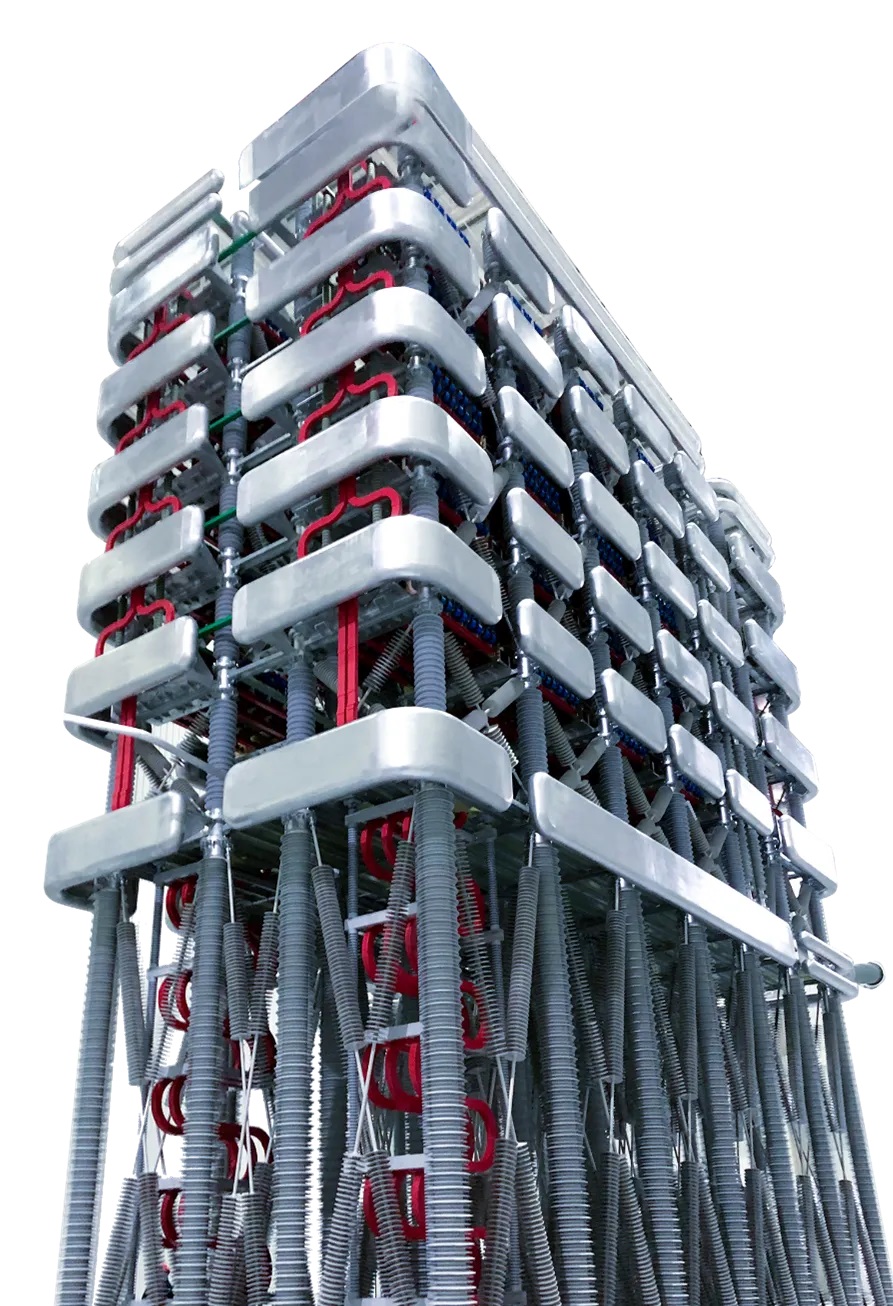
535kV DC circuit breaker
Main contributors: Zeng Rong (Tsinghua University), Zha Kunpeng (State Grid Smart Grid Research Institute Co., Ltd.), Yu Zhanqing (Tsinghua University), Gao Chong (State Grid Smart Grid Research Institute Co., Ltd.), Fang Taixun (Nanjing NARI Relay Protection Electric Co., Ltd.), Chen Fanglin (Zhuzhou CRRC Times Semiconductor Co., Ltd.)
As the core basic equipment that needs to be conquered in the construction of new power systems, high-voltage DC circuit breakers are responsible for cutting off fault currents and ensuring the safety of the power grid in the first place. The project team invented a new high-voltage DC breaking whole-wafer power semiconductor device, conquered the three key technologies of DC breaking: ultra-high voltage tolerance, ultra-large current breaking, and strong transient energy dissipation, and took the lead in developing a series of DC circuit breakers covering 535kV/200kV/10kV/375V voltage levels and 100kA/25kA/10kA/5kA current ranges, which are used in the world’s first ultra-high voltage DC power grid and multi-terminal DC transmission major projects. In the future, it will continue to support the development of large-scale new energy such as Shagohuang, Tibetan power, and deep sea wind power in my country, and promote the implementation of the “dual carbon” national strategy.
Second Prize of National Technological Invention Award
Key technologies and applications of visual spatial computing
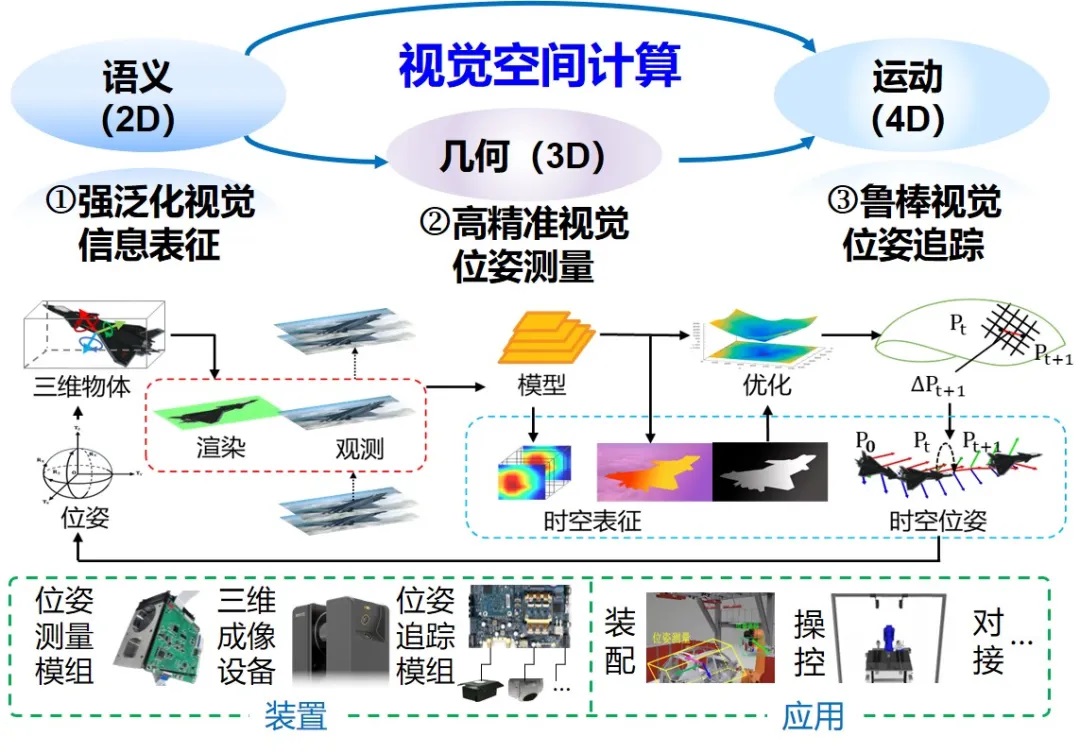
Overall project framework
Main contributors: Ji Xiangyang (Tsinghua University), Ye Qixiang (University of Chinese Academy of Sciences), Lian Xiaocong (Tsinghua University), Li Zhigang (Tsinghua University), Wan Fang (University of Chinese Academy of Sciences), Feng Chaoyu (Beijing Xiaomi Mobile Software Co., Ltd.)
Visual spatial computing aims to analyze semantic information such as representation and category of targets in three-dimensional scenes, geometric information such as position and direction, and motion information such as behavior and trajectory. The project team invented a strong generalized visual information representation technology, a high-precision visual pose measurement method, and a robust visual pose tracking technology, and built an efficient, scalable, and cross-platform visual spatial computing device and system to solve the three core problems of “what”, “where”, and “where to go” of scene targets. The results have been applied on a large scale in the fields of high-precision industrial vision-guided assembly, mobile terminal visual perception and interaction, and unmanned system aerial guidance interaction, with significant economic and social benefits and broad prospects for promotion and application.

